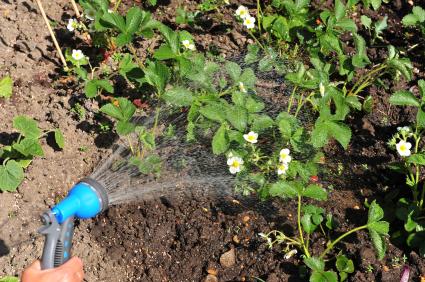Strawberries, which are a delectable fruit that is simple to cultivate and can be relished straight from the garden, are a good example. If you have a piece of sunny ground in your yard, you may grow your own strawberry patch and eat delicious, fresh strawberries throughout the whole summer.
This article will take you step-by-step through the process of planting a strawberry patch, from deciding on the ideal site to gathering your first crop of berries.
Choose the Right Location
Strawberries need a minimum of six hours of sunshine each day; thus, you should choose a spot in your yard that receives a lot of sunlight. Additionally, the soil needs to have good drainage and be somewhat acidic.

Before planting, you may want to amend the soil with peat moss or sulfur if it does not have a naturally acidic pH.
Prepare the Soil
After you have decided on a spot, the next step is to get the ground ready. It is important that the soil be sandy and crumbly so that the roots of the strawberry plants may readily branch out and grow in all directions.

Digging the dirt up with a shovel or tiller can help you break it up and make it easier to work with.
Add Fertilizer

Since strawberries are strong feeders, the soil will need to be amended with some fertilizer before the plants are put in. You might use a fertilizer with a balanced ratio, such as 10-10-10. Follow the instructions on the back of the fertilizer container before applying it to the soil.
Planting the Strawberry Plants
Plants of the strawberry plant are often offered for sale either bare-rooted or in pots. Before you can plant bare-root plants, you must first let them soak in water for a few hours. Bare-root plants may be purchased at garden supply stores.
When planting a strawberry plant, dig a hole that is almost twice as broad as the root ball of the plant. This will ensure that the plant has enough room to grow. After the plant has been positioned in the hole, fill the space around it with dirt. Around the plant, the dirt should be pressed down firmly in order to eliminate any air pockets.
Watering the Plants

After you have planted the strawberry plants, be sure to give them plenty of water. You need to be sure to water the plants on a consistent basis, particularly in the first few weeks after planting them.
Fertilize Your Strawberry Plants
During the growth season, you should fertilize your strawberry plants once every several weeks at the absolute least. You might use a fertilizer with a balanced ratio, such as 10-10-10. Follow the instructions on the back of the fertilizer container before applying it to the soil.
Mulching the Plants
If you mulch the area surrounding your strawberry plants, it will assist to retain moisture in the soil and prevent weeds from growing. Mulch may be made of a variety of materials, including pine needles, bark chips, or straw.
Harvesting the Berries

In general, strawberries are ready to be picked when they have reached their full red color and have become firm. You should start harvesting the berries as soon as possible in the morning so that they are still cold and crisp.
Simply twisting a strawberry off of its stem will allow you to pick it. Take care not to tug on the stem, since doing so might cause harm to the plant.
Consider These Tips
- Protecting strawberry plants from frost may be necessary in colder climates. To do this, just spread a layer of straw or plastic over the plants.
- There are several pests and illnesses that may affect strawberries. The best way to safeguard your plants is to plant resistant kinds and maintain a clean garden.
- Visit a garden store or nursery near you if you need help getting started with strawberry planting.



